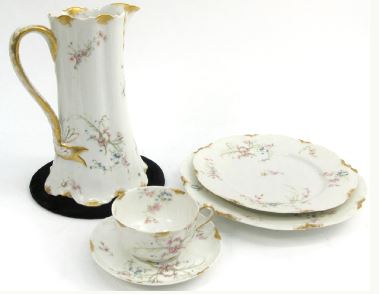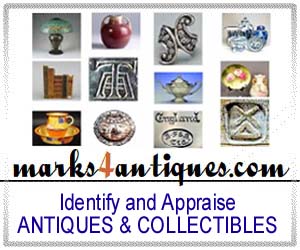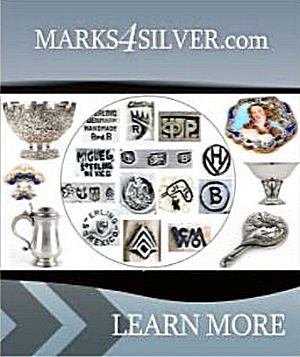Identification and Price guides for Antiques & Collectibles


COLLECTIBLE HAVILAND PORCELAIN:
A Guide for the Savvy Collector
Join the most updated and complete collectibles research online - Learn more...
 If you are a collector of fine porcelain, you are probably familiar with Haviland. This French porcelain manufacturer is famous for producing some of the most exquisite and sought-after porcelain in the world. Collectors prize Haviland porcelain for its delicate beauty, superior craftsmanship, and historical significance. In this article, we will explore the world of collectible Haviland porcelain, from its history to its value and how to identify the real thing.
If you are a collector of fine porcelain, you are probably familiar with Haviland. This French porcelain manufacturer is famous for producing some of the most exquisite and sought-after porcelain in the world. Collectors prize Haviland porcelain for its delicate beauty, superior craftsmanship, and historical significance. In this article, we will explore the world of collectible Haviland porcelain, from its history to its value and how to identify the real thing.
The History of Haviland Porcelain
The story of Haviland porcelain began in the early 19th century with David Haviland, an American businessman who relocated to Limoges, France, in search of the finest porcelain. Haviland was determined to create porcelain that could rival the quality of the finest European manufacturers. He opened his own porcelain factory, Haviland & Co., in 1842, and by the late 19th century, Haviland porcelain had become one of the most popular and respected brands in the world.
The company's success was due in part to its ability to produce porcelain that was both beautiful and durable. Haviland porcelain was handcrafted by skilled artisans and decorated with intricate patterns that were inspired by the natural world. The company's most famous pattern, "Rosalinde," was created in the 1890s and features delicate pink roses against a white background.
Today, Haviland porcelain remains highly collectible, with pieces ranging from the classic white porcelain to colorful designs with floral and fruit motifs.
The Value of Haviland Porcelain
The value of Haviland porcelain varies depending on several factors, including its age, rarity, condition, and pattern. Some of the most valuable Haviland porcelain pieces are those from the 19th century, particularly those made before 1870. These early pieces are often marked with the initials "D & C" for "David Haviland & Co." and are highly prized by collectors.
Another factor that can affect the value of Haviland porcelain is its rarity. Some patterns were only produced for a short period, making them more difficult to find and therefore more valuable. For example, the "Marquise de Sevigne" pattern, which features delicate pink and blue flowers on a white background, was only produced for a few years in the early 1900s and is highly sought after by collectors.
Condition is also an important factor to consider when evaluating the value of Haviland porcelain. Pieces that are in excellent condition, with no chips, cracks, or repairs, are more valuable than those with damage. However, even pieces with minor damage can still be collectible if they are rare or in a desirable pattern.
Finally, the pattern of the piece can also affect its value. Some of the most collectible patterns include "Rosalinde," "Schleiger," "Cloverleaf," and "Gardenia." These patterns are highly sought after by collectors and can command high prices at auction.
How to Identify Haviland Porcelain
Identifying Haviland porcelain can be challenging, particularly if the piece is unmarked. However, there are several clues that can help you determine if a piece is authentic Haviland porcelain.
The first clue is the quality of the porcelain itself. Haviland porcelain is known for its fine, translucent quality and delicate beauty. If the porcelain is thick or heavy, it is unlikely to be authentic Haviland porcelain.
Another clue is the pattern. Haviland porcelain is known for its intricate floral patterns, which often feature delicate pink roses or other flowers. The pattern should be well executed and evenly spaced, with no smudging or bleeding.
If the piece is marked, it should bear the Haviland name or one of its many variations, such as "Haviland & Co.," "Haviland Limoges," or "H & Co. France." The mark may also include the pattern name and number. These marks can be found on the bottom or back of the piece and are often stamped in blue or red ink.
It's important to note that there are many counterfeit Haviland porcelain pieces on the market, so it's essential to buy from a reputable dealer or auction house. Some of the most common fakes include pieces that are marked with the Haviland name but are made by other manufacturers or pieces that are decorated with decals rather than hand-painted.
Collecting Haviland Porcelain
Collecting Haviland porcelain can be a rewarding and enjoyable hobby. Whether you are a seasoned collector or just starting, there are several tips to keep in mind.
One of the most important tips is to buy the best quality you can afford. While it may be tempting to buy a damaged piece because it's cheaper, a damaged piece is unlikely to appreciate in value over time. Instead, invest in pieces that are in excellent condition and have desirable patterns.
Another tip is to specialize in a particular pattern or era. By focusing your collection on a particular pattern or era, you can become an expert and quickly spot valuable pieces. Some collectors specialize in early 19th-century pieces, while others focus on more modern designs.
When buying Haviland porcelain, it's also important to do your research. Learn about the history of the company, its patterns, and the marks used to identify authentic pieces. Attend auctions, visit antique shops, and talk to other collectors to gain a deeper understanding of the market.
The Future of Haviland Porcelain
Despite the popularity of Haviland porcelain, the future of the brand is uncertain. The company has undergone several ownership changes over the years, and in recent years, production has slowed. However, Haviland porcelain remains a valuable and highly sought-after collectible, and its legacy is sure to endure.
In conclusion, Haviland porcelain is a beautiful and valuable collectible that has captured the hearts of collectors for over a century. From its rich history to its intricate patterns and fine craftsmanship, Haviland porcelain is a treasure to behold. By following the tips outlined in this article, you can become a savvy collector and build a collection that will delight you for years to come.
Unlock the true value of your collection with our comprehensive research guides from identifying makers' marks to appraising all kinds of antiques and collectibles, including items featured in this article.
Our up-to-date information will give you an accurate understanding of your items' worth. Don't miss out on this valuable resource - visit our research tools today!
In addition to some examples shown below on this page, you can also search our price guide for your own treasures.
Examples of related items from our Price Guides
-
FRENCH HAVILAND PORCELAIN PARTIAL TABLE SERVICEFrench [more like this]
-
SIX TRADE BOOKS, 18TH/19TH C.Six trade books, [more like this]
-
CABINET PLATESTwo Vintage Cabinet Plates. [more like this]
-
ANTIQUE HAVILAND LIMOGES SERVING SETAntique [more like this]
-
FRENCH IMPRESSIONIST VASE - AUTEUIL STUDIO, [more like this]
-
FRENCH IMPRESSIONIST BARBOTINE PLAQUE BY [more like this]
-
12 HAVILAND ILLUSION BARBARA BERRY DINNER [more like this]
-
HAVILAND ILLUSIONS DINNERWARE, BARBARA BERRY,Haviland [more like this]
-
12 HAVILAND LIMOGES LATTICE & FLOWER BOWLS [more like this]
-
LIMOGES HAYES PRESIDENTIAL PATTERN OYSTER [more like this]
-
FRANCIS BACON, OPERUM MORALIUM, PRINTED 1638 [more like this]
-
Edouard Dammouse and Félix Bracquemond for [more like this]
There are many more auction results available to our members...
Explore more items from our
Antiques & Collectibles Price Guide
Edouard Dammouse and Félix Bracquemond[more like this]
Albert-Louis Dammouse. Vases, set of[more like this]
Albert-Louis Dammouse. Vase with leaves.[more like this]
Albert-Louis Dammouse. Tall vase with[more like this]
Albert-Louis Dammouse. Vase. c. 1900,[more like this]
Albert-Louis Dammouse. Tiles with pheasants,[more like this]
Albert-Louis Dammouse. Neptune and Amphitrite[more like this]
Albert-Louis Dammouse. Collection of[more like this]
Édouard-Alexandre Dammouse for Haviland[more like this]
Édouard-Alexandre Dammouse for Haviland[more like this]
Albert-Louis Dammouse. Floor vase. c.[more like this]
ERNEST CHAPLET (1835-1909) & EDOUARD[more like this]
This list is limited to only a few results.
Many more items are available to our members through our
Price Guides!






